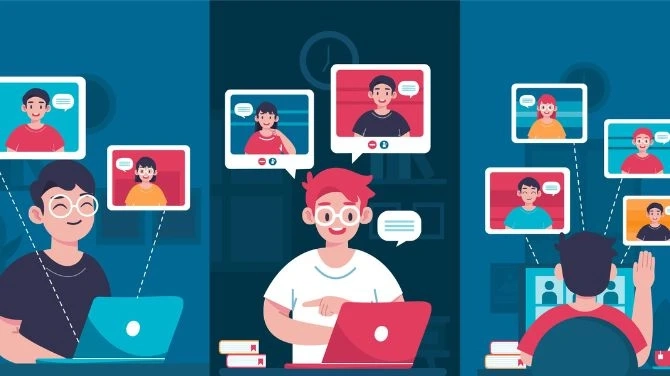In the modern world of marketing, creating engaging experiences for customers is key to success. Gamification, a technique that applies game mechanics and elements to non-game contexts, has emerged as a powerful tool in capturing and retaining customer attention. When it comes to the transport industry, gamification has proven to be a game-changer, offering companies innovative ways to interact with their customers while promoting their brands and services.
A2 Digital is the best marketing agency for B2C. Visit our website and grow your business.
What is Gamification in Transport Marketing?
Gamification involves integrating game-like elements such as points, rewards, challenges, and competitions into the marketing strategies of transport companies. It taps into the natural human desire for achievement and recognition, turning mundane activities into exciting and rewarding experiences.
The Importance of Customer Engagement:
In the digital era, customers have become more discerning and easily distracted. The success of marketing efforts depends on the ability to engage customers effectively. Gamification provides an opportunity to captivate users on multiple levels, fostering a deeper connection between the brand and the consumer.
How Gamification Enhances Customer Engagement:
Loyalty Programs: Transport companies can use gamified loyalty programs to incentivize repeat business. By rewarding customers with points or badges for frequent travel, companies can encourage customer loyalty and retention.
Interactive Travel Apps: Gamified mobile apps make the travel experience enjoyable. Features such as progress tracking, challenges, and virtual rewards create excitement and motivate users to explore the app regularly.
Social Media Campaigns and Challenges: Engaging customers through social media challenges and games related to transportation not only creates buzz but also encourages user-generated content, spreading the brand message further.
Incentive-Based Referral Systems: By gamifying the referral process, companies can encourage customers to refer their friends and family, expanding their customer base organically.
Interactive Advertising: Gamified advertisements, such as interactive quizzes or puzzles, attract higher levels of engagement and provide an opportunity to communicate the brand's message in a fun and memorable way.
The Impact of Gamification on the Transport Industry:
Increased Customer Retention: Gamification fosters a sense of attachment to the brand, reducing customer churn and increasing customer lifetime value.
Positive Brand Perception: Customers associate gamified experiences with positive emotions, leading to favorable brand perception and increased brand loyalty.
Data Collection and Analysis: Gamification allows companies to collect valuable user data, enabling them to gain insights into customer behavior and preferences.
Increased Sales and Revenue: Engaging customers through gamification can lead to higher conversion rates and increased revenue.
Case Studies: Successful Gamification in Transport Marketing:
Ride-Sharing App's Points System: A leading ride-sharing app introduced a points system that rewarded users for each completed ride. Users could redeem points for discounts or free rides, resulting in a significant increase in customer retention.
Public Transportation Scavenger Hunt: A public transportation agency organized a scavenger hunt through its mobile app. Participants had to visit various locations using public transport to win prizes, effectively promoting the use of their services.
Challenges and Risks of Implementing Gamification:
Balancing Fun and Safety: In transport marketing, safety should always be the top priority. Gamification should not compromise the safety of passengers or distract them from critical information.
Ensuring User Inclusivity: Gamified experiences should be accessible and enjoyable for all users, regardless of age, abilities, or technological proficiency.
Maintaining Relevance and Novelty: To sustain interest, companies must continually innovate and refresh their gamified experiences to avoid user fatigue.
Addressing Privacy Concerns: Collecting user data for gamification must be done responsibly, with transparent communication about data usage and protection.
Gamification Trends in Transport Marketing:
Augmented Reality and Virtual Reality Integration: Incorporating AR and VR technologies into travel experiences can create immersive and interactive journeys.
Personalization through Gamified Experiences: Tailoring gamified experiences to individual preferences enhances engagement and customer satisfaction.
Sustainable Transportation Gamification: Rewarding eco-friendly transportation choices can promote sustainable practices and align the brand with environmental values.
Tips for Implementing Effective Gamification Strategies:
Know Your Target Audience: Understanding customer preferences and motivations is crucial to designing relevant and appealing gamified experiences.
Set Clear Goals and Objectives: Define the purpose of gamification and the desired outcomes to measure its success effectively.
Provide Real Rewards and Incentives: Tangible rewards and meaningful incentives motivate customers to participate actively.
Continuously Analyze and Improve: Regularly assess the effectiveness of gamified strategies and make necessary improvements based on user feedback and data analysis.
Collaborate with Customers for Feedback: Involve customers in the development process to ensure their needs and desires are met, fostering a sense of ownership and satisfaction.
Ethical Considerations in Gamification:
While gamification can be a powerful tool, companies must be mindful of ethical concerns. Transparency, fairness, and user consent should be at the core of any gamified experience to build trust and maintain a positive brand image.
Conclusion:
Gamification in transport marketing has revolutionized customer engagement by transforming everyday interactions into enjoyable and rewarding experiences. By leveraging gamified strategies, transport companies can forge stronger connections with their customers, boost brand loyalty, and drive business growth.


